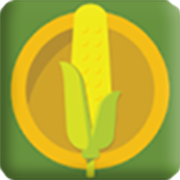CALF REARING FROM DAY 1 TO WEANING
CALF REARING FROM DAY 1 TO WEANING
Day 1 to 4
- Soon after calving, the cow licks the calf. This stops the calf from being suffocated and helps in development of maternal bond
- The navel area should be disinfected with iodine
- The calf should fully be allowed to suckle first milk produced (known as colostrum) for the first 4 days. Colostrum is highly nutritious, contain anti-bodies, provides highly digestible protein globules and it helps the calf to open up its digestive tract
- Birth weight should be recorded to monitor growth rate.
Calf failing to suckle properly
- Calf can fail to suckle if it is weak or if the cow is cannot feed the calf
- If the calf fails to suckle properly, it should be bottle fed and the milk should be given at body temperature to avoid diarrhoea
- If the cow is not releasing milk, give it time to buildup pressure within the udder causing the milk to leak out, partial milking will relieve the discomfort and encourage development of full milk production.
Foster Mothering
- If the cow dies before the calf has received colostrum, colostrum should be acquired and given to the calf especially where another cow is available
- If no other cow is available, go for the following recipe for colostrum substitute:
- 1 fresh egg
- 1 litre clean warm water
- 1 teaspoonful of cod liver oil
- 3 teaspoonfuls castor oil.
- These should be mixed well and fed to the calf three times a day for the first four days, and then a milk replacer should be fed.
Day 4 to 8
- After 3 days the calf can be kept separate from the cow and bottle fed
- The separation of cow and calf will allow a considerable amount of milk to be produced and sufficient amount left for the calf.
Day 8 to Weaning
- From Day 8 to 1 month, the calf can suckle twice a day, or be fed 2 litres each in the morning and afternoon
- Thereafter, the cow should be milked twice with a teat left for the calf. The calf should by then be slowly introduced to roughages and be adjusted to appetite
- At 12 weeks of age, the calf should be eating sufficient roughages and madeya in order to harden them in preparation to weaning
- If the calf does not appear to thrive, weaning should be postponed for some more days.
Weaners Stage
- Weaning is the process whereby the calf stops to suckle from its dam and can survive on the other feed sources other than milk itself
- Age at weaning depends on how well a calf is fed. The better the feeding, the earlier the weaning and vice versa. However, it is recommendable to wean at 12 weeks
- During this stage, most of the husbandry practices can be done. These are castration, and de-budding/dehorning
- The animal should be dewormed and dipped accordingly.


